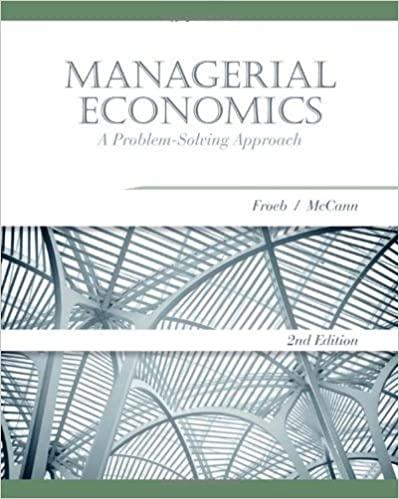Multiple-Choice Questions 1. An industry is defined as: a. A group of firms producing the exact same
Question:
1. An industry is defined as:
a. A group of firms producing the exact same products and services.
b. Firms producing items that sell through the same distribution channels.
c. Firms that have the same resources and capabilities.
d. A group of firms producing products that are close substitutes.
2. Buyers have higher power when:
a. Firms sell a highly differentiated product.
b. They are not a significant purchaser of the supplier’s output.
c. Switching costs are low.
d. the buyer industry is highly fragmented (buyers are not concentrated).
3. If a firm successfully adopts a product differentiation strategy, what should happen to the elasticity of demand for its product?
a. Increase
b. Decrease
c. Become unit elastic
d. Is unaffected
4. When a resource or capability is valuable and rare, a firm may gain a:
a. Sustainable competitive advantage.
b. Competitive parity.
c. Cost advantage.
d. Temporary competitive advantage.
5. Which of the following is critical for a firm adopting a cost-reduction strategy?
a. The firm must be the first to adopt the cost-reduction strategy.
b. The strategy reduces costs by at least 10%.
c. The strategy is focused on reducing internal production costs.
d. The methods of achieving cost reductions are difficult to imitate.
Distribution
The word "distribution" has several meanings in the financial world, most of them pertaining to the payment of assets from a fund, account, or individual security to an investor or beneficiary. Retirement account distributions are among the most...
Fantastic news! We've Found the answer you've been seeking!
Step by Step Answer:
Related Book For 

Managerial Economics A Problem-Solving Approach
ISBN: b00btm8fk0
2nd Edition
Authors: Luke M. Froeb, Brain T. Mccann
Question Posted:





